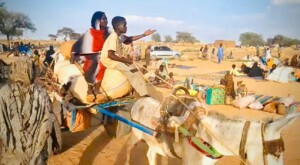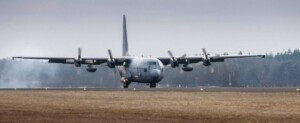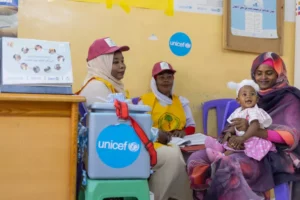Sudan OCHA bulletin 12: South Sudanese refugees, new IOM registrations Darfur
The UN Refugee Agency (UNHCR) reported that the total number of South Sudanese refugees in Sudan since conflict broke out in December 2013 is over 417,000, of whom over 28,000 refugees arrived in the first two weeks of May.
The UN Refugee Agency (UNHCR) reported that the total number of South Sudanese refugees in Sudan since conflict broke out in December 2013 is over 417,000, of whom over 28,000 refugees arrived in the first two weeks of May. In 2017, almost 137,000 refugees arrived from South Sudan, which is more than the total number of arrivals during 2016, according to UNHCR.
During the first half of May, almost 20,000 refugees sought shelter and assistance in Sudan as a result of ongoing hostilities in Kodok in South Sudan’s Upper Nile State. This includes 13,645 refugees in White Nile, and a further 5,261 in South Kordofan. Contingency plans have been developed to respond to possible further influxes; according to newly arrived refugees, many people are reportedly on their way to Sudan from Attara, Fashoda and Kaka in Upper Nile, South Sudan.
Some 9,000 South Sudanese refugees arrived in East and South Darfur states between 1-5 May, said UNHCR. Overall, the South Sudanese refugee crisis is a children’s emergency, with children making up over 65 per cent of the refugee population, and the majority of refugees (approximately 88 per cent) are women and children.
High acute malnutrition rates among refugee children in White Nile
A nutrition assessment carried out across refugee sites in White Nile State (October 2016) identified a Global Acute Malnutrition (GAM) rate higher than 15 per cent, as well as a Severe Acute Malnutrition (SAM) prevalence of over 2 per cent (critical).The nutritional status of South Sudanese refugees remains a pressing concern, as those entering Sudan are coming from areas currently facing emergency levels of acute
malnutrition. People told UNHCR workers that the main drivers of food insecurity are the lack of livelihood opportunities, limited access to cooking fuel, restriction of movement in some areas, high prices on local commodities and limited access to land for farming.
Sudan's response to South Sudanese refugee influx
In September 2016, the Sudanese Government recognised South Sudanese as refugees, following the signing of a Memorandum of Understanding with UNHCR. South Sudanese refugees in general have been able to move freely in hosting states, and access some employment opportunities and public services, writes OCHA.
IOM registration of displaced, returnees and refugees in April
The International Organization for Migration (IOM) in Sudan reported in its April 2017 Displacement Tracking Matrix (DTM) Fact Sheet that about 85,500 individuals, including displaced people, returnees and refugees, were registered by IOM’s teams in April in Central, North and South Darfur and South and West Kordofan states. In addition, more than 920 individuals were tracked in different localities in South Kordofan state.
About 52,700 displaced registered in April
85 per cent of the registered displaced people in Darfur were displaced during the Jebel Marra fighting in early 2016. From these, 24,613 displaced were registered in Tawila locality, North Darfur and 20,402 were registered in Nierteti locality, Central Darfur.
Additionally, 7,554 newly displaced people who fled their homes in East Darfur and arrived between 17 February and 8 March in El Lait locality, North Darfur were registered in April. These people had fled their villages in East Darfur state due to inter-communal conflict between farmers and pastoralists and sought refuge.
Following improved access for verification of displacement in Darfur (mainly in Central Darfur) during the first quarter of 2017, the 2016 displacement figures have been revised. In 2016, approximately 158,600 people were newly displaced across Darfur, according to the UN and partners. Up to an additional 6,000 people were also reportedly displaced (in addition to about 122,600 who were displaced in 2016 and have reportedly returned), but the UN and partners have been unable to verify these figures due to a lack of access to the relevant locations.
Over 10,000 returnees registered in Darfur in April
IOM teams registered 10,229 returnees in April, including 4,385 in Otash village, South Darfur and 5,844 returnees were registered in nine localities in North Darfur State. Most of the returnees in Otash village, South Darfur, had returned from Otash camp; whereas returnees in North Darfur had returned either from Chad or from other areas of North Darfur.
The registered returnees said their return is permanent and that they do not plan to go back to their areas of displacement.
Increase in water supply in Sortony
The UN Children Fund (UNICEF) and partners report that the amount of safe drinking water supplied to displaced people in Sortony displacement site in North Darfur has increased and is currently at 270,000 litres or 12.5 litres per person per day (a 59 per cent increase from a few days earlier). Efforts are expected to improve the water supply in Sortony displacement site and to effectively bridge the current water supply gap.
The reduction in ground water levels in the nearby wadi (seasonal riverbed) Khor Tui due to seasonal fluctuation has resulted in a significant reduction of water quantity supplied to displaced people over the previous week. There are 21,553 displaced people from Jebel Marra in Sortony who arrived in the area mainly during the first half of 2016 seeking shelter and assistance.
Schools in El Naeem camp in East Darfur overcrowded
Humanitarian partners report that there are several challenges with regard to education for displaced children in El Naeem camp in East Darfur state. Classes are extremely overcrowded in the camp’s 15 basic schools, with some 80 to 110 students per classroom. In total, there are about 17,500 students (55 per cent are girls) in these 15 schools.
Because of the overcrowding of classes and lack of space, a number of students were not enrolled last year. An additional 24 classrooms are needed to enrol more than 1,200 children in the first grade. According to the executive committee of the camp, there is a lack of gender-sensitive latrines in seven schools.
El Naeem camp is one of the largest camps in East Darfur and hosts some 46,000 people, including more than 19,000 school age children, according to humanitarian partners.











 and then
and then